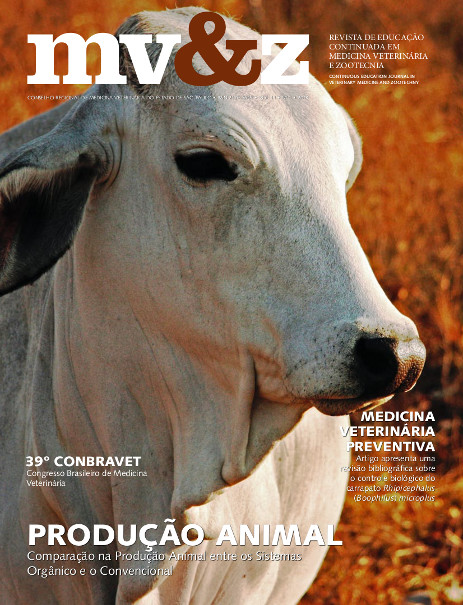Antigenic and genotypic characterization of rabies virus isolates from bats from Botucatu city and region
Main Article Content
Abstract
For some time ago, bats are receiving an increased importance in Public Health because they are considered the main reservoirs of rabies virus around the world, including Brazil. Although bats remain the rabies epidemiological cycles for centuries, only in the last decades the rabies in bats had its recognition, throughout researches focused on the role of these animals in the epidemiological cycle of the disease and also on their variants and their implications in the development of new reservoirs for rabies virus, mainly in regions where the disease in dogs was controlled. The state of São Paulo, coordinated by the Institute Pasteur, performs epidemiological surveillance for rabies through registered laboratories for its diagnosis. The labs of Zoonosis Diagnostic Service, School of Veterinary Medicine and Animal Science – UNESP – Botucatu – SP is registered for receiving material for diagnosis of some municipalities of the region. Between 2003 and 2010, 19 samples of non-hematophagous bats were diagnosed as positive by IFD and Biological Evidence. These isolates were antigenically characterized by the panel of monoclonal antibodies donated by PAHO-CDC (Centers for Disease Control and Prevention, Atlanta, GA, USA Pan-American Health), revealing seven of these isolates belonged to variant 3, which has the vampire bat Desmodus rotundus as reservoir, as well as an insectivorous bat of the genus Myotis presenting variant 4, characterisitc of the other insectivorous bat Tadarida brasiliensis, and other three profiles are not compatible, NC-1, NC-2 and NC-3. All isolates were assayed by RT-PCR and their products had the nucleoprotein gene (N) viral partially sequenced, generating a phylogenetic tree that grouped these isolates into four clusters, designated as lineages Nyctinomops, Myotis, Desmodus rotundus, and a new lineage of rabies virus not previously characterized, which apparently has the bats of the genus Myotis as reservoir. This lineage showed an average intraspecific identity of 99.8%, ranging from 99.6 to 100% for nucleotides and 100% amino acids.
Article Details
1. Autores mantém os direitos autorais e concedem à revista o direito de primeira publicação, com o trabalho licenciado sob a Creative Commons Atribuição-NãoComercial-SemDerivações 4.0 Internacional
2. Autores têm autorização para assumir contratos adicionais separadamente, para distribuição não-exclusica da versão do trabalho publicada nesta revista (ex.: publicar em repositório institucional ou como capítulo de livro), com reconhecimento de autoria e publicação inicial nesta revista.
3. Autores têm permissão e são estimulados a publicar e distribuir seu trabalho online (ex.: em repositórios instituicionais ou na sua página pessoal) a qualquer ponto antes ou durante o processo editorial, já que isso pode gerar alterações produtivas, bem como aumentar o impacto e a citação do trabalho publicado (Veja O Efeito do Acesso Livre);
